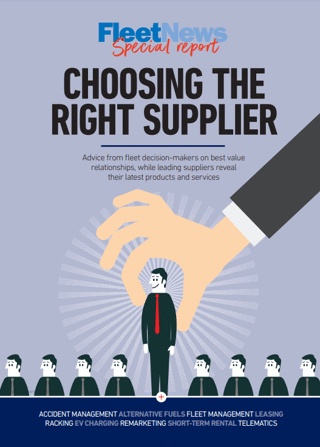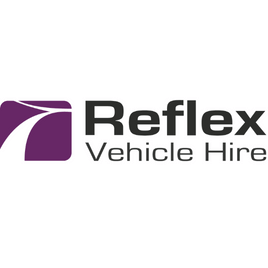This feature was taken from our comprehensive Guide to Choosing the Right Supplier. Click here to read the full special report.
Modern fleet decision-makers are as much supply chain managers as they are fleet managers.
Whether you outsource your fleet to a third-party provider or run everything in-house, you will still have myriad relationships that require negotiating, setting up and managing. These range from the vehicles on your choice list to the fleet management software and telematics that ensure you run an efficient, low-cost operation.
These supplier relationships should be valuable and vital partnerships, a crucial part of the daily running of the business and, like any good relationship, it needs the investment of time and effort.
Preparation is everything. Approach such partnerships methodically and dispassionately and your company will go through a productive process that will elicit the right provider or providers to help fund and run the fleet.
First and foremost, says Paul Hollick, chair of the Association of Fleet Professionals (AFP) fleets should “work out why they need vehicles in the business and then the method of funding they want”.
All tenders should follow the same basic outline. Start by identifying what you want from the relationship.
The next move should be to look at internal policies to see which ones need to be applied to the tender: ethical purchasing, environment, sustainability, health and safety, values and behaviour will all need to be included. A cultural fit is crucial.
Fleets which already know what is available in the market do not need to do a request for information (RFI), but if they want to test the temperature of the water, sending out an RFI to a broad selection of companies will give a clear picture of what the industry is doing.
Those already well versed can skip to the next phase: a pre-qualification questionnaire (PQQ).
These generally cover considerations such as finance, quality, equal opportunities and health and safety, but can include any areas of specific interest to a company.
Having narrowed down the number of bidders, the next document has to provide a clear picture of the constitution of the fleet.
This includes vehicle specification, use cases, the renewal profile and any challenges and opportunities you would like to explore. In addition, explain what services and products you need from the recipients and how you will weight the answers.
It is essential to keep this document simple, unambiguous and to ask only questions that need answering. If ‘nice to have’ items are included, they will be priced into suppliers’ responses, although it will also identify suppliers willing to add value with free-of-charge services. It is a balance between being concise and informative.
There is a tendency to make bid documents too complicated, which will cause some companies to decline to participate and others not to complete them properly.
Fleet managers should not be tempted to re-hash old tender documents: it is likely their business has moved on from the conditions that drove it five years previously.
Fleets should word tenders in a way to elicit useful answers. Ask valid questions when you are going to differentiate potential suppliers on the basis of the answer.
Misunderstandings are quite common, so fleet managers should spell out what they expect from their potential supplier and provide a clear statement of works.
Procurement is playing an increasing role in the tender process, particularly for the big-ticket items such as leasing contracts. It has improved the quality of the documents sent out.
But there is a downside.
Procurement-led tenders may not consult widely enough with internal stakeholders such as finance, fleet managers and HR. As a result, they can restrict quotations to contract hire only, for example, when an alternative arrangement may be a better fit, and then they miss opportunities.
Scoring and weighting can often be a thorny issue, particularly when companies overstate the bias on pricing instead of value and service.
Clearly, when it comes to products such as telematics, trials offer the best way to identify which is best suited to your needs. However, this should only occur once you have been through the process to identify and shortlist potential suppliers based on the steps outlined above.
Leasing is more complex as the supplier will be far more integrated into the working fabric of the fleet.
A relationship with a leasing company is a partnership and a low price does not necessarily mean good value. It is worth asking about sustainability of pricing to ensure that a low price does not creep up over the course of the contract.
An overly prescriptive tender document does not give suppliers the opportunity to demonstrate added value, their full range of capabilities, innovation or thought leadership.
Presentations should be included as part of the process and can be revealing, says Bauer Media group fleet/risk manager Debbie Floyde.
During a previous tender, one leasing company arrived with five people from chief executive to account manager and “gave a professional presentation, as we would expect”, says Floyde.
However, another company sent two people who had not been part of the tender process and one of them focused on commercial vehicles; Bauer’s fleet is predominantly car.
“They had not read the brief – which doesn’t give you any confidence,” she says.
Realistic timescales are also important when it comes to the major tenders, such as leasing.
Setting unrealistic deadlines means the quality of the submission is less than the process deserves.
Once you have settled on your partner, it is important to ensure that everything you negotiated has been put into the contract.
Hollick offers a final piece of advice.
“The most important factor is to treat your supplier as a partner,” he says. “You want to get the most receptive, most sustainable partner you possibly can, who will work with you in the long term to help shape your business.”
10 steps to a smooth and risk-free procurement process.
1. Know what you want
Do you need to go through a tender process? If the service you require is very specific or you only have a few vehicles, you could contact suppliers directly. However, the thought process before you start must be the same either way; knowing what you want is crucial.
2. Question colleagues
Start by examining your current provision. Speak to key stakeholders – such as other directors and staff – to identify what is important. Taking a collaborative approach means you can utilise the skills and expertise from across your business.
3. Draw up a priority list
Everything on your wish list will come with a cost, and not just financially. If time is critical, broaden the definition of vehicle you will accept. If product is critical, then longer lead times may be needed. Think what you are willing to pay for each element.
4. Put value before price
If price is the most important element for you, say so upfront; but usually it’s best value rather than price alone that matters. Any supplier needs to be competitive on price, but this should not sacrifice quality or value provided. Assess service levels, value for money, innovative ideas and expertise when deciding if a supplier is suitable. Any tender should tease out cost and service information to allow the best decision for the company and its drivers.
5. Don’t fall for freebies
Look at the whole package and not just the free extras. These may save some money, but your company will save a lot more if you focus on ensuring the structure is right in the first place.
6. Research the market
Make sure you are aware of all the key companies in the marketplace. Ask for testimonials from those you decide to select for the tender process – and ensure you follow them up. Check their financial security – you need suppliers that have a strong balance sheet. Talk to other fleets about the lessons they have learned while tendering. Also, seek advice from leasing/fleet management companies about structuring the tender.
7. Watch latest technology
If you need a supplier that can offer continual improvement or contract enhancement as technologies change, say so. You need a supplier that understands the latest market developments, including the emergence of new technology.
8. Find someone you trust
Meet face to face – even before the suppliers have put in their tenders. This is the first step in a relationship – make sure you shake hands with someone you like, can trust and can work with. Ask whether their business culture fits with your own ideologies.
9. Look beyond the figures
Identify those elements which are not vehicle-related such as corporate social responsibility, company ethos, a supplier’s financial stability and reporting capabilities. Be clear about the type of company you want to work with.
10. Prioritise
Accept that everything on your wish list will come with a cost and prioritise accordingly.
The Choosing the Right Supplier special report is sponsored by: FMG, BP Pulse, Fleet Operations, JCT600 VLS, System Edstrom, ChargedEV, Cazoo, Europcar and Webfleet.























Login to comment
Comments
No comments have been made yet.